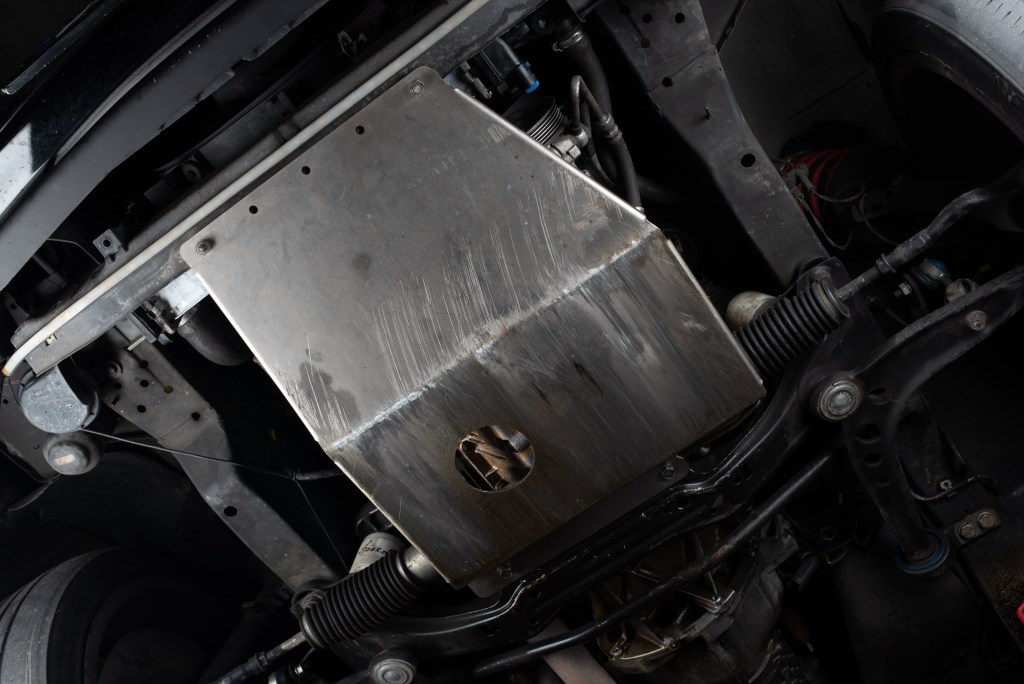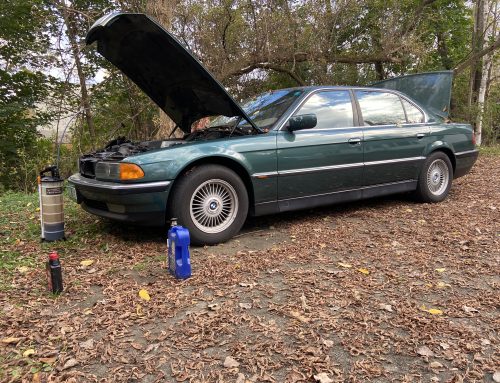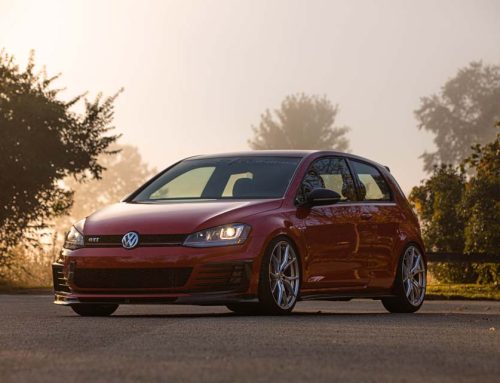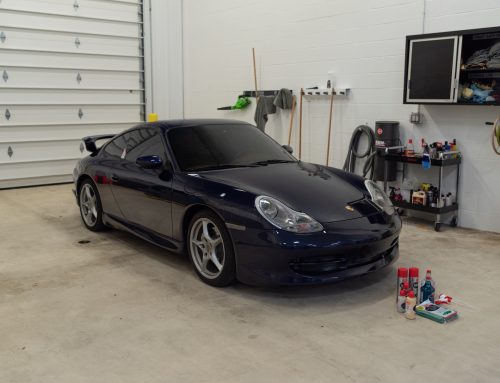Lowering your car is one of the best early modifications you can make to improve both looks and performance. The lower stance, reduced wheel gap, and more aggressive appearance are enough to make you fall in love with your car all over again. More than the improved looks, lowered cars benefit from a lower center of gravity which translates to sharper handling. Better still, suspension upgrades like coilovers offer adjustability to dial in your handling characteristics. Unfortunately, one of the best things about lowering your car is also the only real drawback: ground clearance. This week, we’re talking about the benefits of lowering your street-driven car with coilovers or lowering springs and how you can enjoy a lowered daily without any of the downsides.

For most daily driven or primarily street driven cars, coilovers tend to be the most popular choice thanks to their adjustability. If you are all about dialing in the perfect fitment for your wheel setup or are looking for a more comprehensive lowering package that allows you to tune the ride and height to your liking, coilovers are just right for you. We won’t repeat ourselves, we’ve already put together a great coilover buyer’s guide you can read to get a better idea of which options are right for you. All you need to know is if you want the widest range of height and ride adjustability, a comprehensive suspension package, and the best handling, coilovers are the right way to go when lowering your car.
Springs are fixed, which means you can’t change the amount of suspension drop they provide. Once they’re installed, that’s the height your car will be until you replace them with a different spring. Lowering springs are designed to work with the factory suspension on your car and are engineered with the proper rate for the reduced ride height they provide. Springs are popular because they’re extremely affordable, you can find a range of rates and heights from various lowering spring manufacturers, and you can greatly improve your car’s handling and appearance while retaining OEM features like electronically controlled dampers. If you just want a bit of a drop in ride height and don’t need to make any changes, springs are an excellent option to achieve the results you want without spending an arm and a leg.

In either case, lowering your car gives you noticeable visual and performance improvements that we highly recommend for every enthusiast. Stock height is no fun! Unfortunately, cracking an oil pan or damaging anything vital under your car isn’t fun, either. There lies the Achilles heel of lowered cars. With reduced ground clearance, your car is susceptible to damage from road hazards, bridge connections, speed bumps, potholes, and more. Driven carefully, you may never experience any issues, but driving on high alert all the time can make it stressful to get behind the wheel, which means you aren’t out there enjoying your car as much as you could be.
With protective skid plates, like our line of ECS Street Shields and Turner Motorsport Skid Plates, you can ensure the only negative effect of lowering your car is mitigated with a hefty chunk of aluminum. It’s driving peace of mind, even if you aren’t lowered. If you aren’t convinced yet, let me tell you a short story from my experience driving lowered cars that will add credence to the necessity of a skid plate.

I have been driving lowered cars since before I received my driving license. The aggressive stance, sharpened cornering, and rigidity that a good set of coilovers offer is something that has always appealed to me. I’ve never kept a vehicle stock height for longer than a few weeks. After years of familiarity driving static cars that hovered above the pavement, I was confident I’d never slip up and damage anything. I was wrong. I became infatuated with E30s late in college and ended up buying two around the time I graduated, which I naturally decided to lower immediately.

The vert I bought as a daily I chose to make as low as I could possibly make it. The M52 I swapped in dangled just below the front subframe, with the oil pan sitting less than an inch above the ground (you can actually see the break in the shadow under my car in the above picture. The oil pan nearly touches the ground as the car sits). I knew it was at risk, but I figured I could rely on my years of experience driving lowered cars to keep me out of danger. For several months after the swap, I drove without issue. I took it on short trips, back road blasts, and to and from my work in downtown Nashville daily. Sure, I had to navigate the roads carefully and take a specific route that didn’t have train crossings, rough sections of the road, or any major hazards, but it was fine. That is, until one afternoon on the way home I came across some construction that hadn’t been there the day before.
I hit what looked like a smooth section of asphalt as I approached it at speed. It was a patch job for some hole a crew had dug earlier in the day and was actually a depression that created an inverse speed bump across the full lane and dropped several inches down. As soon as I hit it I knew I’d broken my oil pan. Fortunately, it was less than a mile from my shared shop, so I was able to limp the car there before it dumped all its oil on the pavement. Before I’d even pushed the car inside the garage, I’d ordered a skid plate.

From then on, I still drove carefully, but I drove with the confidence and peace of mind that I was protected in the event that I couldn’t avoid something. That skid plate allowed me to safely make the trip up to Ohio for my job interview here at ECS five years ago. It kept my engine protected on the way to Ocean City, Tybee Island, Nashville, Indiana, North Carolina, and all around the midwest for shows. Many times, I’d find myself hitting a bridge expansion or not avoiding a bump in the road and saying a little prayer of thanks to the skid plate that I know kept my fluids inside my engine where they belonged. I’d hear the awful bang, see sparks shoot behind my car, and wince, but I’d know my engine was fine.
SHOP ECS STREET SHIELDS AND TUNNEL BRACES
SHOP TURNER MOTORSPORT SKID PLATES
If you want to lower your car, and you absolutely should, then you need a skid plate. Even if you never encounter anything on the road that would damage the underside of your car, the risk is always there. Whether you choose springs or coilovers for your suspension, lowering your car means increasing the chances that you’ll encounter a road hazard that does more than cause a bumpy ride. If you have to pick between driving on high alert constantly or spending a few bucks to know you’re protected in the event of an emergency, that sounds like an easy choice. After all, It’s better to have the skid plate and never need it than it is to need it and not have it.






Great article but after I went to buy a skid plate for my car I realized you don’t sell them for Mini’s ! Seems crazy that you wouldn’t make one after pushing them with this article.
The risks of a lowered suspension are rightly described particularly for the E30. I used the well developed SPECE30 suspension on mine and used the OE BMW aggravate plate that I purchased through ECS. Yes, it was expensive but I was compelled when I acquired the car and restored it to make the investment when I saw witness marks of scrapes even at the stock ride height. There is a huge difference in the design of the BMW component compared to the aftermarket sheet metal offerings. The BMW component is made of an array of 1/8 thick x 2-1/2 wide steel bars that has been shaped into an Omega profile to give it significant structural strength so that the vehicle’s weight will not deflect it or deform it and allows generous air flow. I don’t see how the thin sheet metal offerings can do the same and instead will deflect and end up impinging the oil pan and still exposing it to damage from impact. So, perhaps the sheet metal may protect the oil pan from minor scrapes but probably not from an impact that could still cause structural damage to the oil pan. I’ve had my BMW aggravate plate on my E30 coupe for over 10-years. It does show evidence of contact (readily repainted) that I was not even aware had occurred but no deformations. I track my car from time to time and rest easy that it can survive a curb or off-track excursion as well as regular street hazards.
Great well written information above, but who wrote it?
Would love to pick your brain before ordering ordering parts for a E46 vert that currently sits maybe 2 inch above yours, but has worn springs and miss matched original and cheapo struts and sagging springs that though handles well is still sloppy.
Contact info would be great.
Anything available for e46